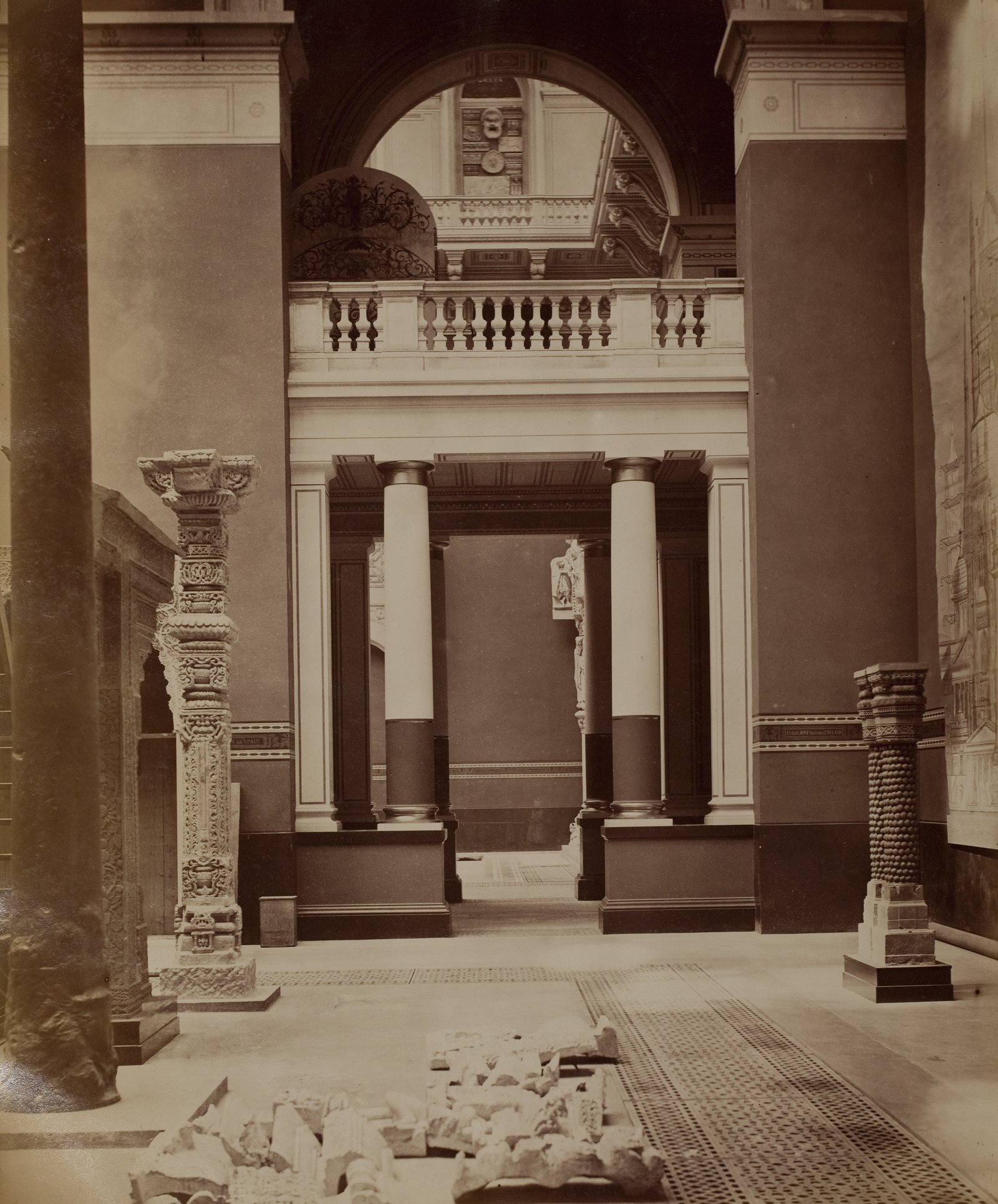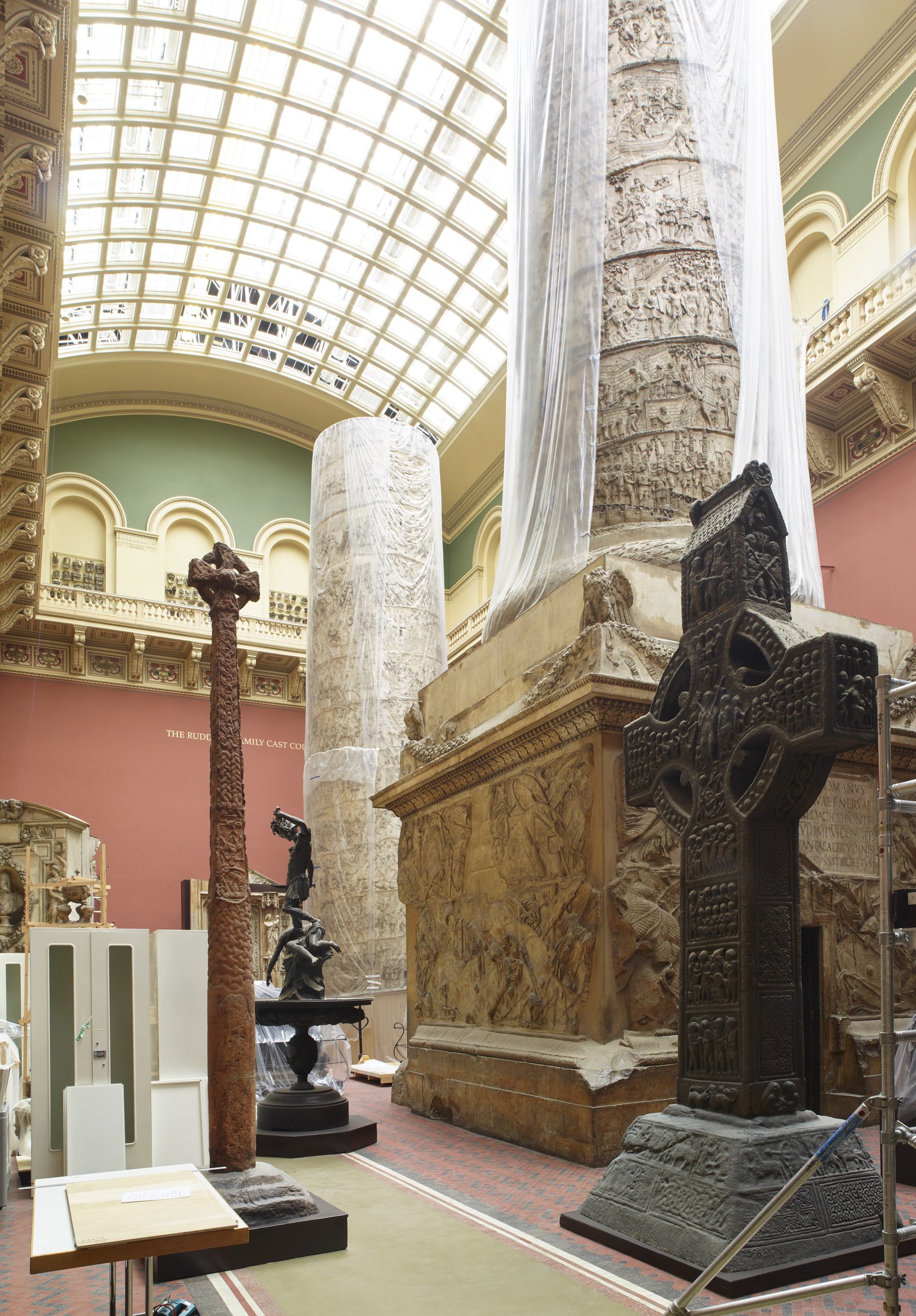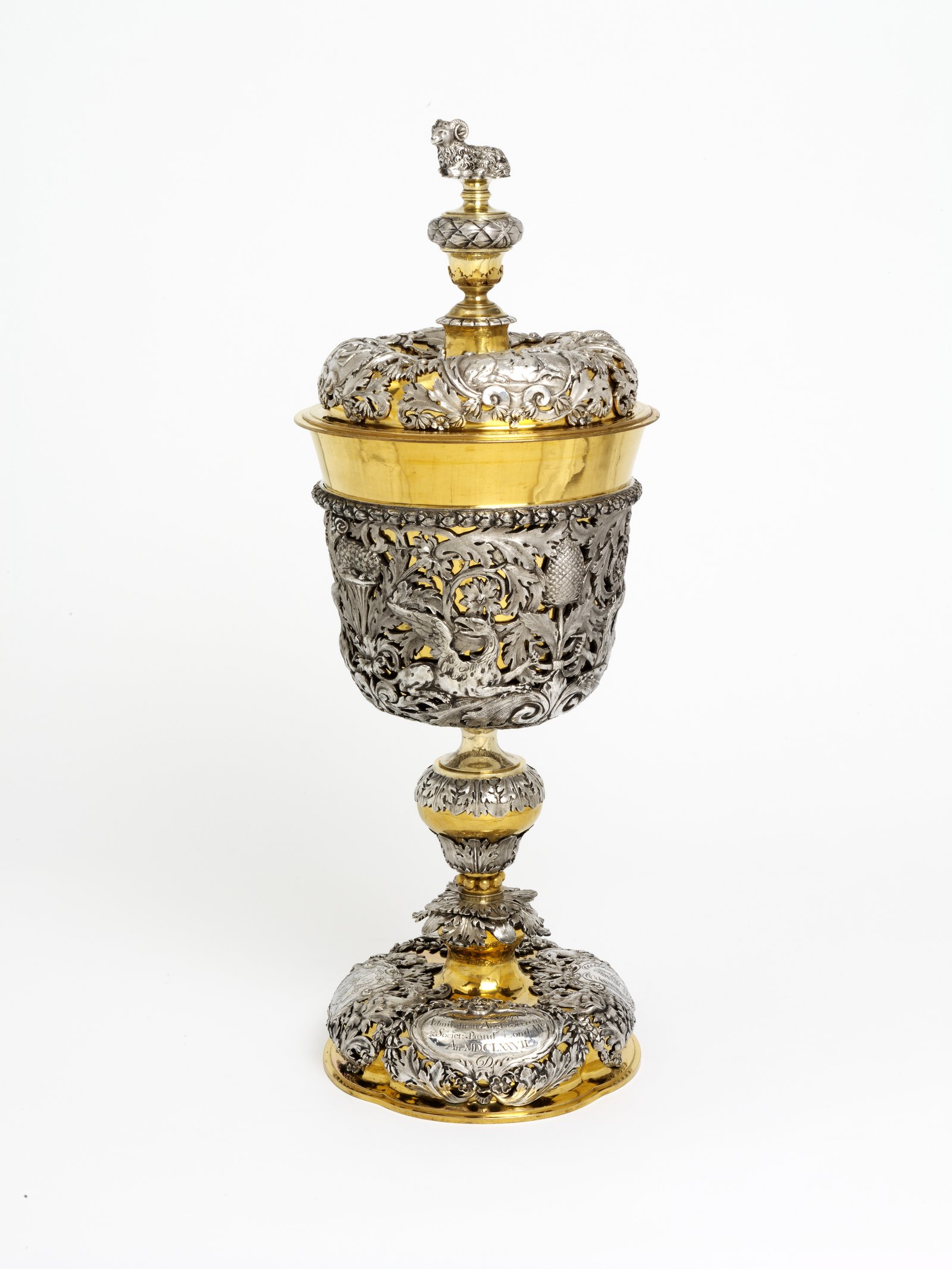
On 1 December 2018, the V&A will open the second and final phase of its redevelopment of the Cast Courts, returning these iconic galleries to their original splendour. The renovation will also feature a brand-new gallery exploring the history, processes and significance of casts and copies as well as looking to their contemporary relevance and future in the digital age. Following the completion of the Weston Cast Court in 2014, the opening of these two galleries will conclude this major project, which began in 2011.
After extensive restoration and conservation work, the West Court - now renamed the Ruddock Family Cast Court, will reopen to the public revealing historic features, including original 19th-century floors and wall colours. The Central Gallery will be renamed the Chitra Nirmal Sethia Gallery. This gallery features a new exhibition exploring the history, significance and contemporary relevance of casts.
Collecting plaster cast reproductions and electrotypes reached the height of popularity in the mid to late 19th century when only a select few could afford to travel outside of the UK. The South Kensington Museum (as the V&A was then known) was at the forefront of this enthusiasm, bringing together casts of important European monuments and works of art for visitors to admire and study here in the UK. In addition to its rapidly expanding collections of plaster casts the V&A was a powerful driving force in the development of the revolutionary new replicating technologies of photography and electrotyping. These technologies enabled the museum not only to create a visual encyclopedia of world ornament but to also position itself as the arbiter of international taste.
Angus Patterson, Senior Curator of Metalwork, said: “The Courts are the strongest embodiment of the museum’s founding mission as a place of art education for both practitioners and the public. The collection was established to train artists and designers to draw rather than to teach artisans and craftspeople to make. The museum's aim was both to get good product design into British factories and to shape ‘public taste’ to help consumers become more discerning in their choices.”
The Cast Courts are the only public galleries in the V&A to display the same collection of objects as when they originally opened in 1873. First known as the Architecture Courts, these are the largest galleries in the V&A and contain casts of some of the world’s most inspiring objects, from Michelangelo’s David to 16th-century tombs by Peter Vischer in Nuremberg and the Pórtico de la Gloria from the Cathedral of Santiago de Compostela. It is one of the only surviving collections of casts in the world today as many other collections were dispersed or even destroyed when this art form fell out of fashion in the mid-20th century. Today, the collection presents a rich and varied array of monumental objects from Europe and beyond, as well as an invaluable record of original sculptures, some of which have severely deteriorated over time.
The largest object in the museum at 35 metres high is the awe-inspiring cast of Trajan’s Column, which will sit at the heart of the Ruddock Family Cast Court. The cast of this famous Roman memorial was transferred to the V&A in 1873 and displayed in two separate sections as the gallery was unable to accommodate its full height. For the first time, the base of Trajan’s Column will be permanently opened, enabling visitors to step inside providing a new perspective on its internal construction.
The Chitra Nirmal Sethia Gallery will provide a new interpretation space exploring the importance of copies. Many of the casts now offer the only the true record of important monuments, some of which have deteriorated due to weathering or have been destroyed during conflict. This new gallery will feature reproductions as well as contextual material and provide an insight into the technology and production of the works.
The gallery will also look to the future. On display for the first time will be a CNC-milled limestone copy of a grave slab from Kala Koraysh in Dagestan alongside a scaled-down 3D printed reproduction of an arch from Palmyra in Syria, destroyed by ISIS in 2016, both acquired by the museum to mark the launch of the Reproduction of Art and Cultural Heritage (ReACH) Declaration in 2017. This declaration set out a blueprint for reproduction in the digital age focusing on archaeological sites at risk. Its launch marked 150 years since Henry Cole’s Universal Convention for Promoting Universally Reproductions of Works of Art for the Benefit of Museums of All Countries in in 1867, whose success prompted the inception of the Cast Courts.
The reopening of the Cast Courts recalls the V&A’s foundation and inspires a forward-thinking approach to the future of reproductions.
For more information, click here.

The original installation in the Cast Court of the reproduction of Trajan's Column, cast by Monsieur Oudry, c1864 from the original 113 AD © Victoria and Albert Museum, London


The Pepys Cup, 1879, electroformed copper, electroplated and electrogilt. Elkington & Co. © Victoria and Albert Museum, London